The (few) Known Facts of April 30th
It was the kind of incredible days we’re used to: at dawn, spectacular and hopeful news; at sunset, confusion and defeat. While night falls, Guaidó appears at the brink of jail and Maduro looks weaker and stronger at once. Let’s try to make sense of this, now.


Cover Photo: AP retrieved
At sunrise today, April 30th, Juan Guaidó and Leopoldo López released a video from Altamira, Caracas, near La Carlota airbase, with a pack of soldiers armed with machine guns, calling people to join them “in the final phase of Operación Libertad.” Last time we saw López free, on the street, was on another demonstration, in February 2014; now, he said the SEBIN officers guarding his house arrest joined the rebellion.
People started to approach La Carlota, and soon the crowd felt the sting of tear gas which was shot along with pellets from inside the air base—which remained loyal to the regime. Maduro’s men, like Diosdado Cabello, called their people to defend the revolution in Miraflores palace and all over the country. “You know what to do,” Cabellos said to the paramilitary groups known as Colectivos. From abroad, Senator Marco Rubio, OAS Secretary General Luis Almagro, and European Parliament speaker Tajani took the freeing of Lopez as good news.
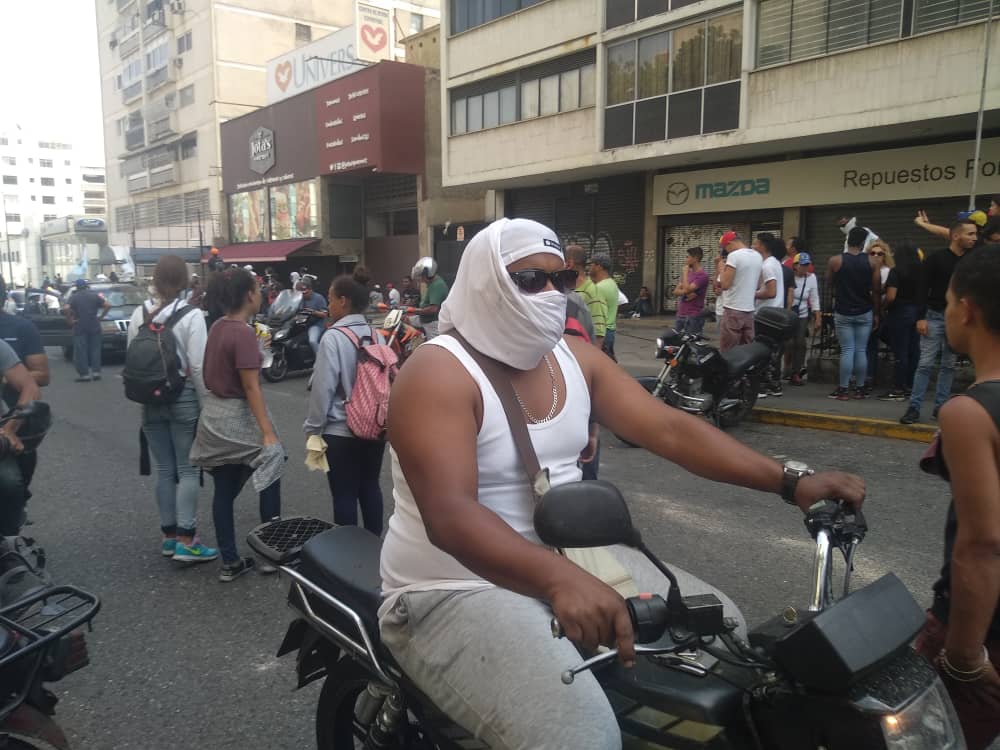 Caracas. April 30th didn’t represent just another protest. It was impressive, as protestors cheered GNB officers who stood by them against the regime’s security forces. Photo: Gabriela Mesones Rojo.
Caracas. April 30th didn’t represent just another protest. It was impressive, as protestors cheered GNB officers who stood by them against the regime’s security forces. Photo: Gabriela Mesones Rojo.
USA, Argentina, Brazil, Chile, Canada, Colombia, Peru, and Panama tweeted their support for the uprising. Spain insisted on free elections, Mexico on a dialogue. Protesters gathered in several cities, using WhatsApp to organize (given how YouTube and Twitter were partially blocked). The Caracas subway was closed and a bunch of GNB soldiers joined the uprising in Altamira: they had a blue ribbon on their arms, machine guns, ammo, and green plantains. Soon, they met more tear gas and gunfire, with no victims.
The regime seemed surprised, but Defense Minister Vladimir Padrino said everything was normal.
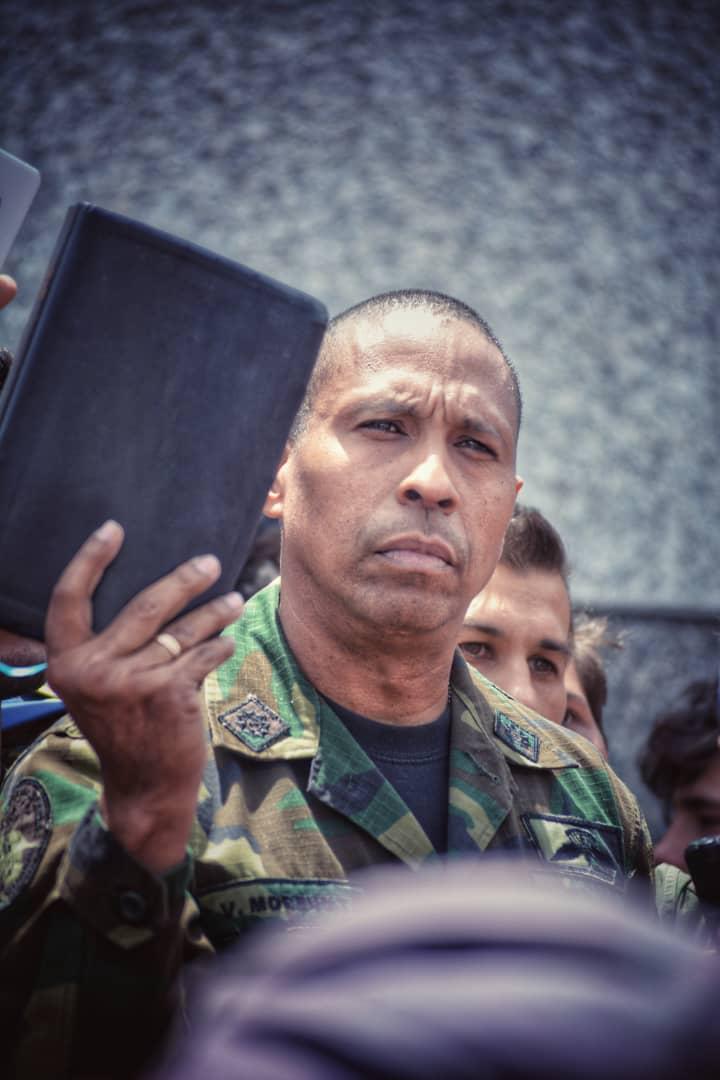 Merida. 80 armed civilians (Colectivos) ambushed the demonstrators, firing shotguns and sub-machine guns. Everyone ran for cover. Photo: Omar Rondón.
Merida. 80 armed civilians (Colectivos) ambushed the demonstrators, firing shotguns and sub-machine guns. Everyone ran for cover. Photo: Omar Rondón.
By noon, Maduro and several high ranking officers of the Armed Forces tweeted that they were united and strong; Cabello gathered with a group of Chavistas near Miraflores palace to say “the coup” was defeated. Unable to take the airbase, Guaidó and López retreated to Altamira square, where Guaidó called for support from all Venezuelans and the rest of the armed forces, with a “now or never” narrative. Guaidó and López marched towards downtown Caracas, facing repression and gunfire by Colectivos at Chacao. Guaidó insisted that people should be protesting on the streets until the regime falls.
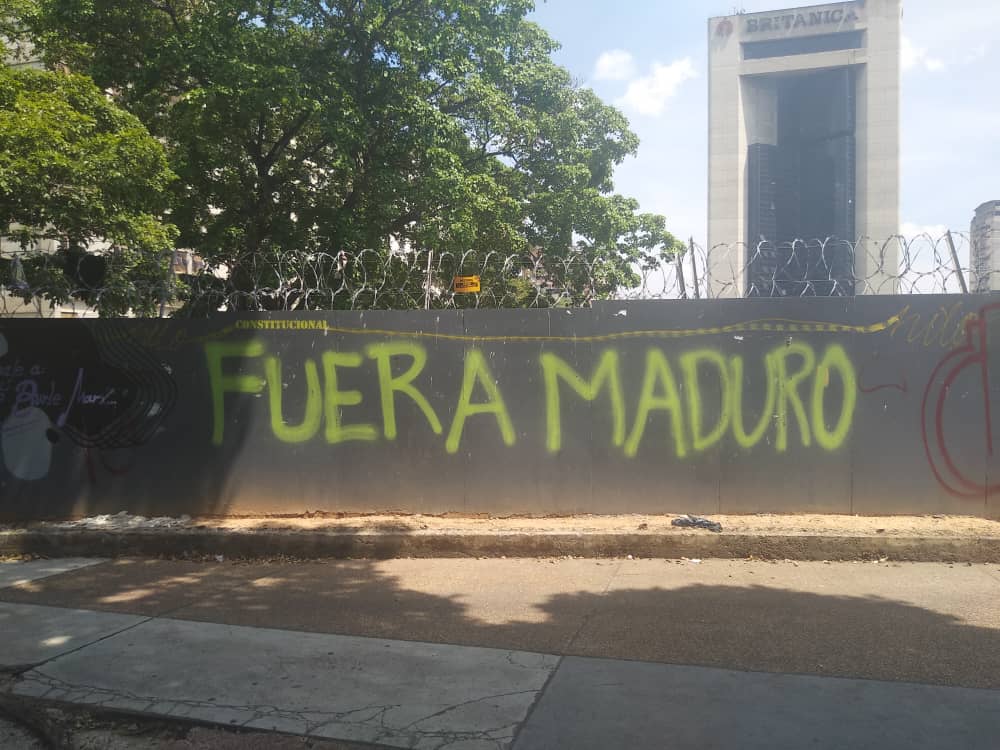 Caracas. There have been anti-Maduro protests in almost all Venezuelan states. Photo: Gabriela Mesones Rojo.
Caracas. There have been anti-Maduro protests in almost all Venezuelan states. Photo: Gabriela Mesones Rojo.
The hardline anti-regime demonstrators resisted teargas at Altamira and several other places across the nation. Some were wounded—in some cases by gunfire. Protestors seemed exhilarated and were eager to stand their ground. It was impressive, as protestors cheered GNB officers who stood by them against the regime’s security forces. The video of a “Chavista” armored vehicle ramming protesters near La Carlota airbase became viral.
In the afternoon, more predictable formal statements took place. Ecuador tweeted support for Guaidó, and Russia and Turkey for Maduro. EU High Representative and UN Secretary-General called all stakeholders to avoid violence. The American special envoy for Venezuela, Eliott Abrams, said that his office had conflicting information about what was happening and the sharpest words came from John Bolton, US National Security Advisor, saying that Venezuelan Defense Minister and Supreme Court president had agreed Maduro needed to leave. This statement rang a bell, because a couple of hours before, journalists Luz Mely Reyes, Alicia Hernández, and Jonathan Bilancieri, all of them working for different outlets, said that, according to their sources, there was a coordinated operation to topple Maduro, but Guaidó and López acted one day before, to avoid Guaidó’s detention, making some of the high officers involved step back at the last minute. Truth or bluff?
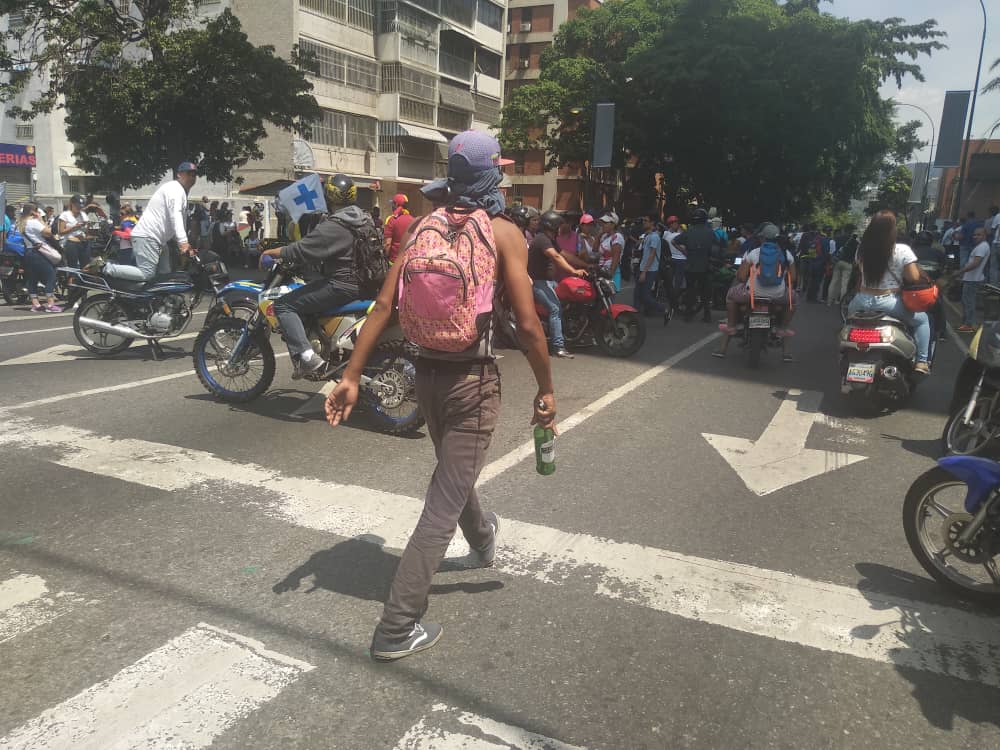 Caracas. Today’s protests were filled with repression from security forces and vague information about the events. Photo: Gabriela Mesones Rojo.
Caracas. Today’s protests were filled with repression from security forces and vague information about the events. Photo: Gabriela Mesones Rojo.
The barracks remained calm, despite the demonstrations near some of them in Caracas, Valencia, and Mérida. There have been anti-Maduro protests in almost all Venezuelan states. In Barquisimeto, FAES and GNB arrested a group of protesters and harassed the journalists covering the events. Colectivos also pestered radio stations.
Leopoldo López’s release caught Maracaibo citizens in a blackout. It wasn’t until 8:00 a.m. that word got around and people rallied to 5 de Julio Avenue. At about 10:00 a.m., the National Guard appeared with tear gas and rubber pellets, leaving at least two wounded. At noon, protesters decided to march to the military garrison near the Indio Mara square, but they were attacked long before arrival. The protest dispersed and although citizens wanted to gather again in 5 de Julio Avenue, soldiers renewed their assault, quashing the demonstration entirely by 2:00 p.m. The VPI team was attacked by Colectivos, who intimidated and harassed journalists Freddy Wetter and Carolina Quintero, shattering the windshield of their vehicle and wounding them.
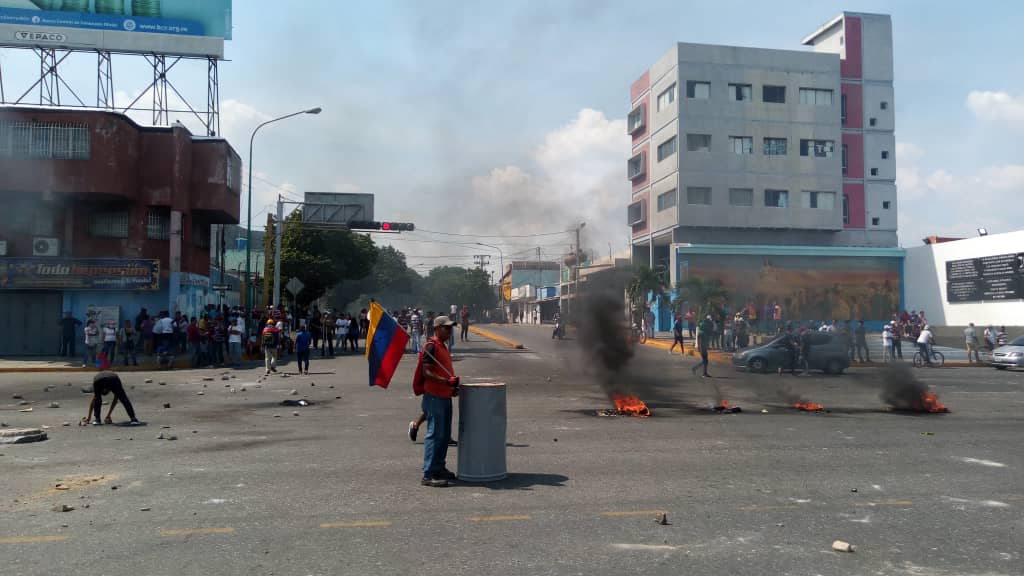 Barquisimeto. There have been anti-Maduro protests in almost all Venezuelan states. In Barquisimeto, FAES and GNB arrested a group of protesters and harassed the journalists covering the events. Colectivos also pestered radio stations. Photo: Rosender Evies.
Barquisimeto. There have been anti-Maduro protests in almost all Venezuelan states. In Barquisimeto, FAES and GNB arrested a group of protesters and harassed the journalists covering the events. Colectivos also pestered radio stations. Photo: Rosender Evies.
In Mérida, the anti-regime protest began at 11:00 a.m., gathering at the headquarters of the National Guard’s 22nd Brigade, in Glorias Patrias. At about 2:30 p.m., some teens in hoods assaulted the building; many protesters tried to prevent it, but security forces immediately reacted by firing tear gas. Three policemen were injured by gunfire (presumably from hooded armed civilians), one of them wounded badly. Security bodies prevented paramedics from assisting the wounded and threatened to fire against them. Protesters set a vehicle parked near the Brigade’s entrance on fire and the National Guard deployed an anti-riot force to disperse them. Moments later, over 80 armed civilians (Colectivos) ambushed the demonstrators, firing shotguns and sub-machine guns. Everyone ran for cover.
In sum, dozens of wounded and detainees, and one death, a young man in La Victoria, Aragua. The usual forces, paramilitary included, in charge of repression. In the following hours, most demonstrations were dispersed. Dissident soldiers were no longer in sight in Altamira, and by 4 PM we knew 25 of them were requesting asylum at the Brazilian embassy, while Leopoldo López and his family were received “as guests” first at the Chilean embassy and soon after at Spain’s.
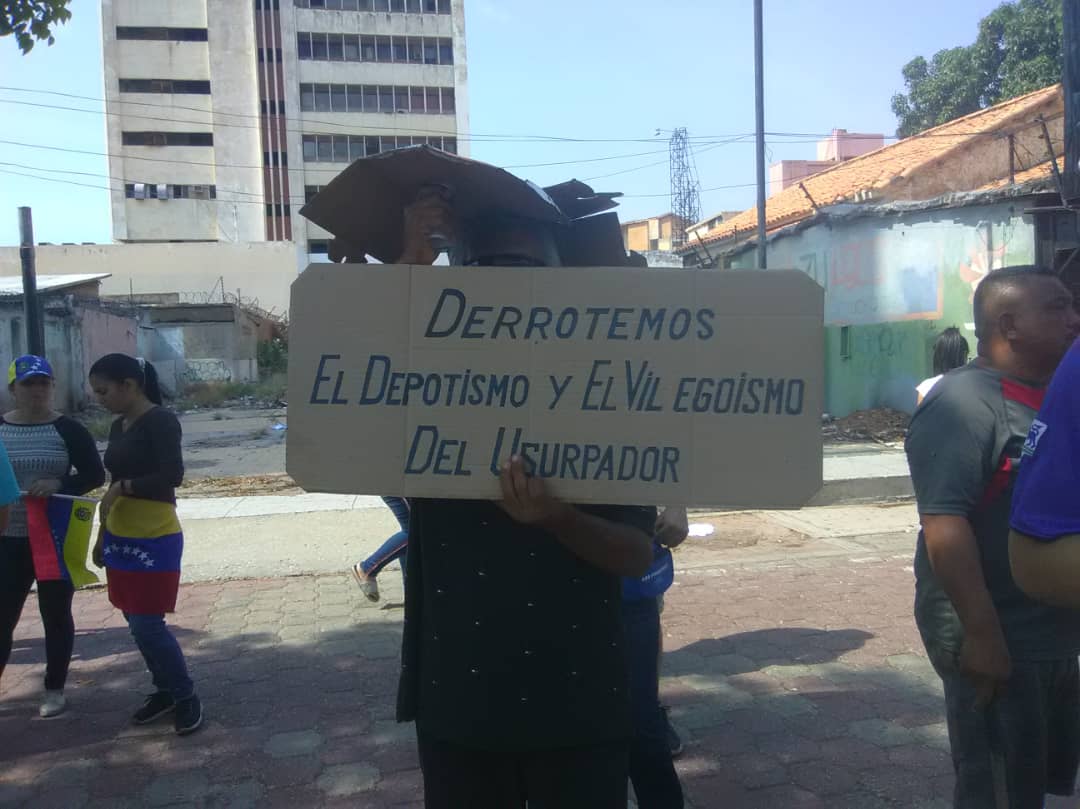 Maracaibo. Leopoldo López’s release caught Maracaibo citizens in a blackout. It wasn’t until 8:00 a.m. that word got around and people rallied to 5 de Julio Avenue. Photo: Braulio Polanco.
Maracaibo. Leopoldo López’s release caught Maracaibo citizens in a blackout. It wasn’t until 8:00 a.m. that word got around and people rallied to 5 de Julio Avenue. Photo: Braulio Polanco.
The day ended with several official statements. The Lima Group (Argentina, Brasil, Canadá, Chile, Colombia, Costa Rica, Guatemala, Honduras, Panamá, Paraguay, Perú and Venezuela) said “this was not a coup; we demand respect for the opposition and the release of all political prisoners; the armed forces must support the legitimate president, Guaidó; Maduro must step aside, and the international community should support the restoration of democracy.” Juan Guaidó shared a brief, ambiguous video message through his Instagram TV channel, highlighting that Maduro lacks the support of the Armed Forces, and announced that, on May 1st, the protest schedule will continue. The Caretaker President said the dictator did nothing but hide, and indirectly supported the story shared by Secretary of State, Mike Pompeo: Maduro was about to leave on a plane this morning, until the Russians convinced him to stay.
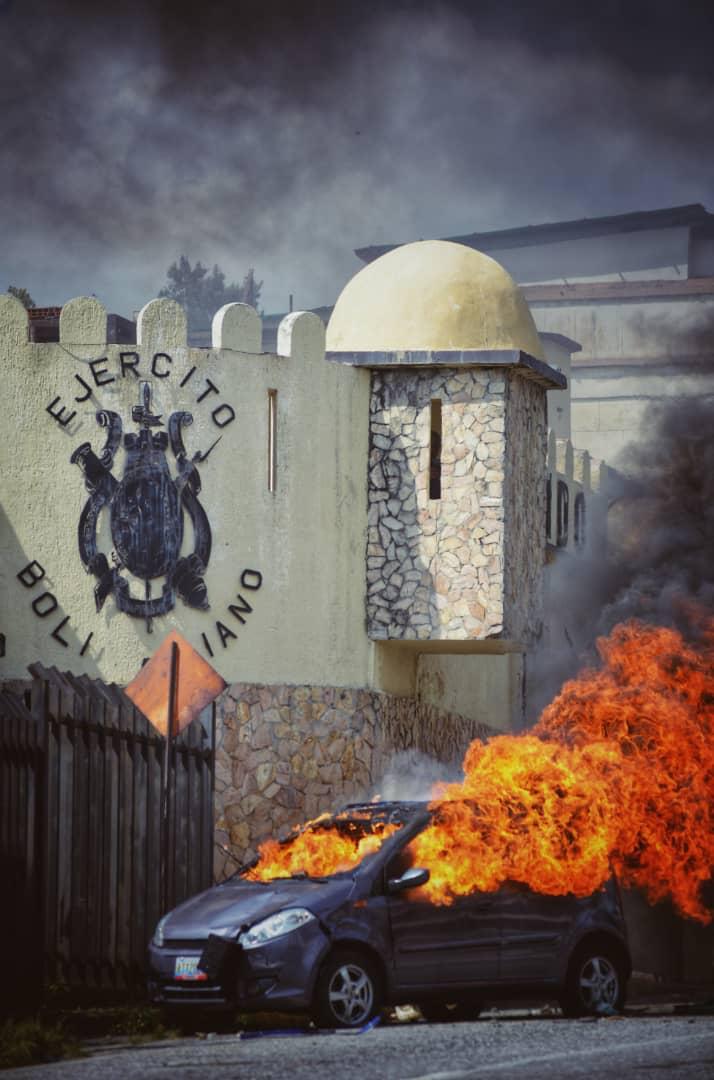 Merida. Protesters set a vehicle parked near the Brigade’s entrance on fire and the National Guard deployed an anti-riot force to disperse them. Photo: Omar Rondón.
Merida. Protesters set a vehicle parked near the Brigade’s entrance on fire and the National Guard deployed an anti-riot force to disperse them. Photo: Omar Rondón.
Nicolás Maduro himself addressed the nation around 9:00 p.m.; Gustavo González López was named SEBIN director again (he was relieved of this same duty on 2018), and the whole speech was focused on trying to make the Venezuelan military’s support evident to his favor. Arrests, he says, are coming.
We can look at the past today, and think of what happened after the attempted coup of January 1st, 1958, in Venezuela. Although defeated, it was the preface for the successful one, 22 days later. However, as political scientist Ángel Álvarez tweeted today, no military uprising in Venezuela has achieved its goals ever since, and we can see what happened in Turkey, when a coup against Recep Erdogan failed and he took advantage of it to purge the State.
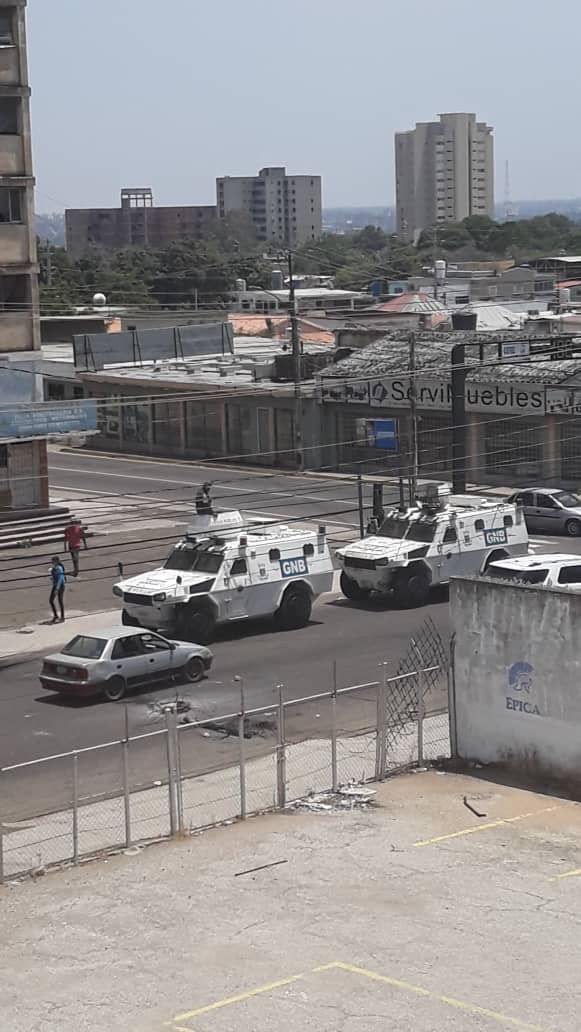 Maracaibo. The National Guard appeared with tear gas and rubber pellets, leaving at least two wounded. At noon, protesters decided to march to the military garrison near the Indio Mara square, but they were attacked long before arrival. Photo: Karen Jaimes.
Maracaibo. The National Guard appeared with tear gas and rubber pellets, leaving at least two wounded. At noon, protesters decided to march to the military garrison near the Indio Mara square, but they were attacked long before arrival. Photo: Karen Jaimes.
The thing is, we can’t compare this with the Chavista coups of 1992, or anything else, really, because this was not a coup. You don’t give an illegitimate ruler a coup, so to determine the nature of these hours, we need more insight on Guaidó and López’s plans. Did they convince a few soldiers, or did they actually speak to big fishes? Was this a desperate bet or an organized effort betrayed by last-minute cold feet? In the first case, this new rebellion is probably over. In the second, it can ignite the spark of a humongous fire.
We won’t join the speculative fever, however; let’s make only a summary of what we do know. Not even SEBIN is free of suspicion. Not a single helicopter, tank or warplane was moved against soldiers who defected, not by running across the border, but in the middle of the capital and evidently armed. No more units, not even at the always dubious Navy, decided to publicly support Guaidó as commander-in-chief.
And Maduro will surely spend the next weeks, days, hours, minutes, wondering who will betray him next. How. And when.
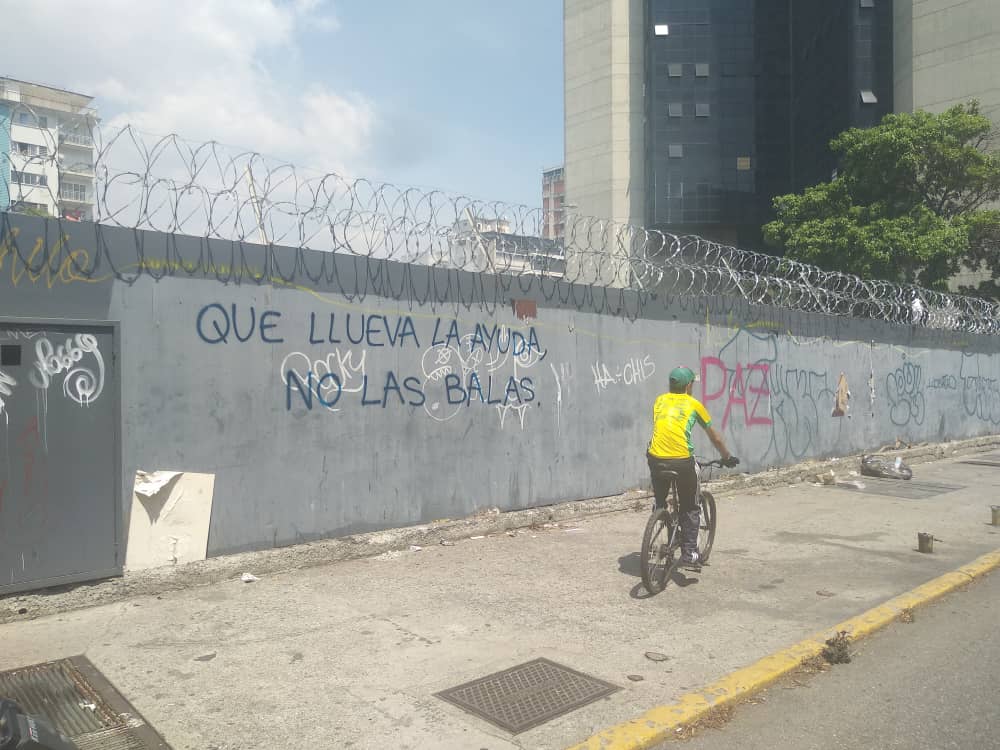 Caracas. “Let it rain help, not bullets” Photo: Gabriela Mesones Rojo.
Caracas. “Let it rain help, not bullets” Photo: Gabriela Mesones Rojo.
Caracas Chronicles is 100% reader-supported.
We’ve been able to hang on for 22 years in one of the craziest media landscapes in the world. We’ve seen different media outlets in Venezuela (and abroad) closing shop, something we’re looking to avoid at all costs. Your collaboration goes a long way in helping us weather the storm.
Donate




